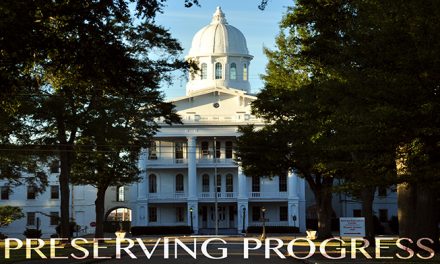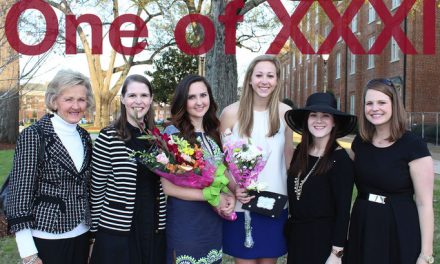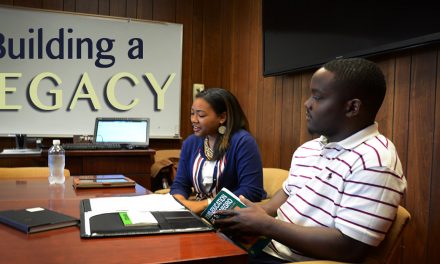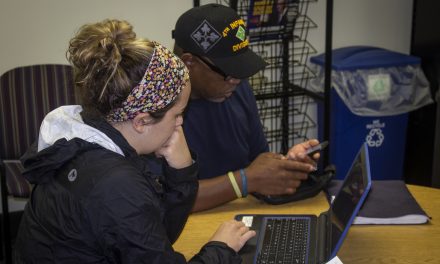STORY BY
DR PAUL PHELPS
DESIGN BY
MARIA OSWALT
When I try to talk with others about Oxford, I generally reflect on the conversations as ineffective. It’s not that the place is difficult to categorize. According to the Times Higher Education, the world’s best university is there. And the town is lovely too, adding to the 8,500 or so university students an additional 150,000 Oxonians. The difficulty arises from the fact that the magic of the place is not containable in any sort of category. As a colleague said to me this past summer, somewhat in a moment of awe, “one learns so much here.”
It’s this awe and learning (and awe as learning) that the faculty of the “UA in Oxford” program try to capture and transact to our summer students. In some ways, this awe is easy to induce. Students who enroll in the “UA in Oxford” program are treated to five weeks of residency in what by all accounts is premier Oxford real estate. The campus of Worcester College not only includes a lake, an orchard and a dedicated cricket pitch (all exceptions by Oxford standards); it also has a gorgeous Georgian library, one of Oxford’s finest cooking staffs and a set of medieval cottages—which are important mainly because they add some quaintness to the eighteenth-century avant-gardism of the college’s other structures.
Supreme Court Justice Elena Kagan and media mogul Rupert Murdoch are both graduates of Worcester. As is Emma Watson, and if you ask kindly enough, the college porters will treat you to set of stories about her Oxford escapes—including stories about the various “disguises” she took on while at Worcester to avoid the paparazzi.
It’s also easy to impress summer abroad students with Oxford history.
Americans, for example, are intrigued to learn that a dispute over the quality of the beer at a 12th century tavern set in motion the series of events that, 100 years later, resulted in the construction of the university. And the possibilities for engagement with British royal family history (of which Americans have an odd and inauthentic obsession) are also vast in Oxford.
Henry II’s mistress Rosamund Clifford, for example, grew up in an Oxfordshire nunnery and was hiding there, so the story goes, when Henry’s wife, Eleanor, found her and forced her to drink from a bowl of poison (in a more symbolic but spurious version, Eleanor stabs Rosamund in the heart). Henry VIII and Catherine of Aragon’s daughter, Mary 1st, upon her ascension to the throne in 1553, tried and convicted of heresy the Archbishop of Canterbury, Thomas Cranmer. Along with two other Protestant reformers, Cranmer was burned alive on March 2, 1556, and the exact site of the burning is memorialized by a subtle cobbling of bricks at the narrow end of what is now a prominent Oxford street (but what was then the area just beyond the town wall).
The effect of spending the afternoon at Rosamund’s nunnery or placing one’s feet on the site where an Archbishop was burned alive is quite visceral, an authentic engagement with the past, though if the game in traveling to Oxford is to substantiate certain fantasies about the British royalty, students can also have toast and tea at The Grand Cafe on High Street—an establishment that, dubiously in my opinion, claims Elizabeth 1st lodged there in 1556.
What’s harder to capture in a conversation about Oxford is the spirit of the place, its personality. It doesn’t bustle like London, but it’s almost certainly more cosmopolitan (a difficult fact to imagine, I’m sure); and it doesn’t tick like many U.S. cities; in fact, its sense of time, and timing, is pleasantly obscure (“in due course” is the Britishism for “whenever we feel like it”). And while from afar the university might seem like a bastion of pretension, it’s genuinely one of the least pretentious places I’ve lived. In fact, a regular meal during term time in Oxford is an exercise in global community. There may be, for example, a biochemist seated to your left, and, on your right—stick your hand in the Oxford sorting hat—an anthropologist. In front of you is a barrister (aka, a lawyer), and to the left and right of the barrister other individuals with other ideas, pursuing other degrees.
But that’s not all.
The biochemist is a New Zealander and an agnostic. The anthropologist is from Brunei and is a Sufi Muslim. And the lawyer (despite being a lawyer, which might preclude other categories of classification) is Lebanese, a gifted Dabkhe dancer, and trilingual. What’s more? After dinner, during the basically mandatory post-dinner drinks, you and the Kiwi and the lawyer learn from the anthropologist how to sing Quawwali at the same time you enjoy your pints of ale.
This is not an aberrant scene in Oxford, and recreating these scenes constitutes a large part of the work that the “UA in Oxford” faculty put into the program. The courses on offer for the program attempt to engender this community with the University and the city. This past summer, for example, we were able to hire a local Oxford poet and professor to teach one of the English literature courses; we offered (with John Beeler in UA’s history department) a course on Beatle-mania and on rock n’ roll in general—the history of which has broad and surprising tendrils in the Oxford club scene. And my course, on Oxford literature, culture and history, came with two, inflexible rules. Rule one: there would be no lecturing, none whatsoever. Rule two: there would be no sitting in desks in classrooms. Really, there would be very little sitting.
I wanted my students to live in the city, to interact with the city, to spend time (at both the top and the bottom) of Bodleian library, to experience the artistry of the crucifixes in the Holywell cemetery, to watch water drain off the side of a Norman church—and be awed by the prescience of the 10th century architecture. From night to night, the location of office hours changed. One night I’d sit in an historic pub; the next night in a minimalist coffee shop (part of Oxford’s serious and, in my opinion, effective response to the hipster movement); the third night underneath a tree in the University Parks, the one favored by J.R.R. Tolkien when he was imagining the Lord of the Rings. The goal was not confusion but immersion, to compress as much of the place as possible into a five week trip.
The most veritable remnant of Oxford as place from the past summer, however, came from the exam labors of a small group of my students.
Tasked with finding, researching and presenting an aspect of Oxford not covered by my syllabus, these three students pursued a cryptic remark by a townie to the existence of medieval tunnels connecting a network of colleges and chapels clustered in the city center. According to the townie, the tunnels had served originally as conduits through which 10th century monks exchanged prized religious artifacts, later, in the 17th century, as refuge for subjugated Jewish individuals, and finally, in the 19th century, as the housing for “market boys” who didn’t meet the age requirement for labor required by British law. But my students couldn’t find the medieval tunnels; they couldn’t even find reference to the tunnels, as a complex network, in the vast collection of primary sources on record in Oxford (of which digitization has made searching significantly easier). In fact, after dozens of emails, a handful of interviews, a brief road trip to the Oxford history center in Headington, the group failed to find anyone who could talk about the tunnels in a knowledgeable, cohesive, less-than cryptic way. “The mystery continues,” so they concluded at the end of their presentation.
I’m not sure I agree. My students may not have found the tunnels (they probably don’t exist), but in collecting a seemingly anomalous series of data, and in pursuing the mystery as far it would take them, they did find Oxford, the place itself, the thing that only becomes clear to you once you spend time being charmed by its magic—and its lack of clarity.
For me, Oxford is something like the metropolitan and collegiate equivalent of an electron. Its history is so vast, so coded, so stratified, its present so serious, so multivalent, so forward looking that the essence of the place is always there and not there, always part of the fabric of what’s happening but always just beyond your capacities of apprehension.






